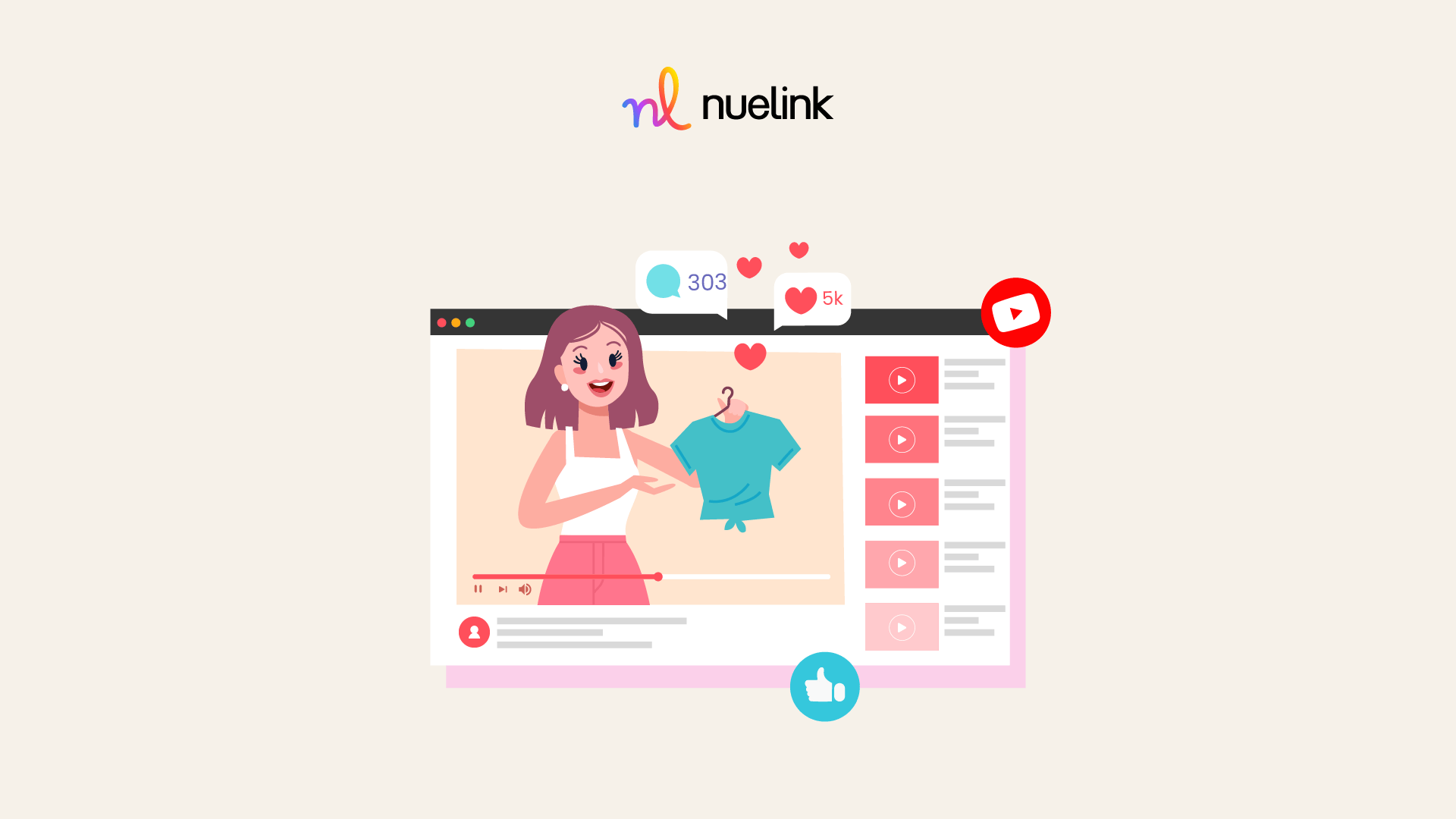As the lines between social media and e-commerce continue to blur, YouTube is recognizing this shift and offering creators and brands innovative ways to engage audiences and drive sales.
With its vast user base and video content capabilities, YouTube provides unique opportunities for businesses to showcase their products and connect with consumers, and creators a chance to get their share.
In this blog, we’ll explore the best practices for implementing social commerce on YouTube, helping you make the most of your YouTube marketing strategy.
1. The Rise of Social Commerce
2. Social Commerce on YouTube
3. Key Features of YouTube for Social Commerce
4. Best Practices for Implementing Social Commerce on YouTube
The Rise of Social Commerce
The world of social media is constantly shifting, and one of the most exciting developments in recent times is the surge in social commerce. With consumers increasingly turning to social media for shopping, this presents e-commerce businesses with a golden opportunity to adapt and thrive on social media.
Many businesses are already familiar with the basics of selling goods online, however, social commerce takes things a step further by creating a complete shopping experience within the platform you are marketing on.
From discovering products to making a purchase, everything happens without ever leaving the social media app, providing a smoother and more integrated shopping experience for users.
Platforms like YouTube and TikTok, which just celebrated $15 billion in consumer spending mainly due to TikTok Shop, are also capitalizing on this trend by embedding e-commerce features directly into their interfaces. With the growing popularity of social commerce, it's clear that businesses have a tremendous opportunity to reach new customers and increase sales.
Social Commerce on YouTube

This year, YouTube has made significant strides in enhancing its social commerce capabilities, unveiling a suite of updates to its shopping features designed to give content creators more ways to monetize their channels.
Among the latest changes are innovative tools that allow creators to showcase products more prominently on their pages and update older videos with fresh shopping links.
One of the most notable additions for brands is an affiliate feature which opens up access to over 300 partner brands, including major names like Target, Shopify, and Adidas. This enables creators to collaborate with these brands, promoting products directly within their content and earning commissions through sales.
Although shopping features have been part of YouTube for some time, the launch of these features has accelerated its social shopping capabilities this year.
Key Features of YouTube for Social Commerce
YouTube has evolved into a powerful platform for social commerce, providing creators and brands with several features to enhance their e-commerce strategies. Here are the key features that make YouTube a strong player in the social commerce space:

1. Shopping Integration in Videos
Creators can add shopping links directly into their videos, allowing viewers to click and purchase products without leaving the platform. Creators can also tag products in their videos, which appear as clickable links during the video. This feature makes it easy for viewers to learn more about the products being showcased and make a purchase.
2. YouTube Shopping Tab
YouTube has introduced a dedicated Shopping tab on channels, where creators can display products and affiliate links. This tab acts as a storefront, making it easier for subscribers to find and purchase products directly from the creator's channel.
3. YouTube Shorts Integration
With the rise of short-form content, YouTube has enabled shoppable links in YouTube Shorts, allowing creators to leverage viral, quick-hitting videos to drive product sales.
4. Affiliate Hub
YouTube’s new Affiliate Hub gives creators access to over 300 partner brands, including major companies like Target and Shopify. This program allows creators to promote these brands’ products and earn commissions on sales generated through their content.
5. Live Shopping
Brands and creators can host live shopping events on YouTube, showcasing products in real-time and interacting with viewers. This feature creates a more engaging shopping experience, driving purchases and fostering a sense of community.
These features make YouTube a versatile and robust platform for social commerce, offering creators and brands multiple ways to engage audiences and drive sales directly through video content.
Best Practices for Implementing Social Commerce on YouTube

To effectively leverage YouTube for social commerce, creators and brands should follow these best practices to maximize engagement and drive sales:
1. Create Engaging and Authentic Content
The main goal is to focus on creating content that tells a story or provides value to your audience, rather than overtly selling products. Authentic and relatable content fosters trust and encourages viewers to engage with the products organically.
You can use videos to showcase how products work, highlight their features, or review them in a way that aligns with your audience’s interests. This approach provides value and helps viewers make informed purchasing decisions.
2. Utilize Shoppable Features Effectively
The point of this social commerce is to place shopping links and product tags in videos where they naturally fit and make sense. Avoid overloading the video with too many links, which can distract viewers and diminish the content's effectiveness.
You can use the dedicated Shopping tab on your channel to organize and highlight your products.
3. Optimize Video Titles and Descriptions
SEO-friendly titles and descriptions improve your content’s visibility on YouTube and help attract more viewers who are interested in what you are selling.
And, don’t forget to encourage viewers to take action by including clear CTAs in your descriptions and videos. Whether it’s to check out a product, visit your Shopping tab, or join a live shopping event, make it easy for them to know what to do next.
4. Monitor Analytics and Adjust Strategies
Regularly reviewing YouTube analytics to understand which videos and products are performing well is a must. Pay attention to metrics like views, click-through rates, and conversion rates to gauge the effectiveness of your social commerce efforts.
5. Maintain Consistent Branding
You also must ensure that the products you promote and the way you present them are consistent with your overall brand identity and values. This consistency helps build a strong, recognizable brand presence that viewers trust.
By following these best practices, and using a social media management tool that supports YouTube such as Nuelink, creators and brands can effectively implement social commerce on YouTube, creating a seamless shopping experience for viewers while maximizing engagement and sales.






